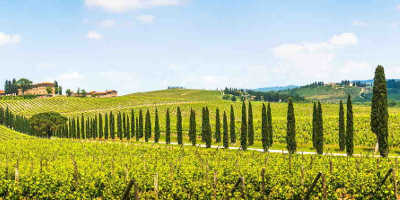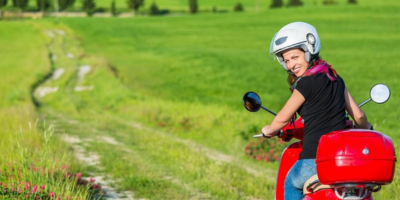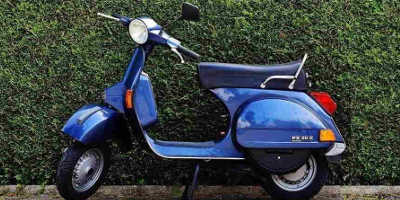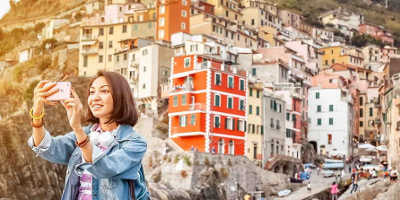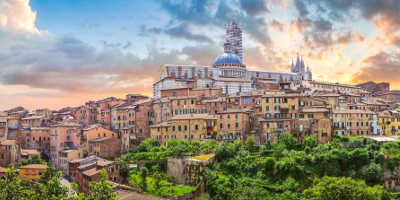The 8 Best Tuscan Wines you will Love
Renown for its beautifully crafted wine, Tuscany provides the perfect conditions for the finest wines to be produced, growing from carefully picked grapes to a compact bottle of the good stuff.
Woven into the cultural identity of the region, Tuscan wine is part of a wider agricultural lifestyle central to Tuscany. Think grapevines, olive trees and wheat. All of these are grown and produced in lush green hills, iconic to the region. Never getting too wet, or too dry, Tuscany offers the perfect climate for a number of different grape varieties to grow.
Over the years the winemaking process has been perfected and different makers have gotten creative with their personal batches of grapes, providing us with many types of wine. With so many to choose from however, it’s hard to know where to start. That’s why we’ve created this handy list of the 8 best Tuscan wines, so you know what to look out for.
Before we start, we should take this opportunity to explain to you what DOC and DOCG stand for, as these are used to describe the quality of wine and are often seen on the bottles of Italian wine. DOC stands for Denomination of Controlled Origin, introduced in the early 1960s it judges the quality of wine on factors such as production area, wine colour, grape varieties and more. DOGC, on the other hand. was created in 1980 as a way to differentiate the top Italian wines, as it was felt that the DOC status was granted too liberally. The regulations for DOGC wines are therefore tighter and more restrictive.
Anyway, that’s enough technical talk, let’s get into the wines.
-
Sassicaia
A red wine, predominantly made with Cabernet Sauvignon and Cabernet Franc, this drink paved the way for an explosion of modern-style blended wines in 1968. The successful blend of the two grape varieties creates an aromatic complexity which is balanced out by a hint of spice, creating a smooth texture to the wine. Pair with beef or venison for a sumptuous mix of flavours.
-
Tignanello
The first modern Italian red wine to be blended with non-traditional grapes, Tignanello is a milestone first manufactured in 1970. Produced exclusively from the vineyard of the same name, which hosts some 140 acres of limestone-rich soils, this modern red is one of the first to be produced without white grapes. Aged in small oak barrels, the blend balances the distinctive black-cherry and wild-berry flavours of the Sangiovese against the structure and power of the Cabernet. Food matches include a classic lasagne, or roasted pork.
-
Castello di Ama L’Apparita
Tuscany’s first wine made purely of Merlot. Castello is named after a small hamlet in the Tuscan hills. Merlot is a red wine grape variety with strong historic ties to Bordeaux and the southwest of France, although it is now widely planted in wine regions across the world. The precise flavours that Merlot imparts are not easily grouped. Plum and black cherry are among the most common fruit-based descriptors used, although its texture rather than its taste is more commentated on. Like the Sassicaia, Merlot goes well with meat dishes, such as veal and pork.
-
Isole E Olena Chianti Classico
From one of the top producers of Chianti Classico (any wine produced in the Chianti region of central Tuscany), this blend is 80% Sangiovese, 15% Canaiolo and 5% Syrah. Full and fruity, this elegant wine carries intensity and flavour, with herbal essences of sage and rosemary characterising its finish. Perfect with a spiced lamb or beef dish.
-
Uccelliera Rapace Toscana
A mix of Sangiovese, Merlot and Cabernet make up this rustic wine. A composition of many of the “Super Tuscan” wines, the Uccelliera Rapace draws on the power and structure of the Cabernet, the sweet, juicy flavours of the Merlot and the sour-cherry tang of the Sangiovese. Although overwhelmingly Italian in nature, the popularity of this blend has seen it used throughout the United States and Australia. To experience it in the true Italian way, pair it with Tuscan-style tripe.
“Super Tuscan” is an unofficial term used to describe red wines from Tuscany which use wine grapes not native to Italy. Merlot, Cabernet and Sauvignon are all included in this as they use non-indigenous grapes.
-
Castello Montauto, Vernaccia di San Gimignano
If you’re not a fan of red wines, you might be interested in this little white number. Its fresh green aromas give this wine energy, as its citrus-like flavours deliver a kick that enlivens the palate with a gentle touch of bitterness to finish. Unlike the rich red wines which go best with meat, this light and zingy white goes superbly with soft cheeses, creamy pastas and fresh bread.
-
Brunello di Montalcino
A DOGC red wine produced in the vineyards surrounding the town of Montalcino. The Brunello di Montalcino is an intense wine, with a mixture of wood, fruit and light vanilla hints throughout. Due to this mix of characteristics the wine improves with age, allowing the flavours to soak into one another, creating an even and harmonious body with a strong aromatic presence. Brunello is an ideal match for structured and composite dishes, such as red meat and cheeses.
-
Carmignano
The lesser known of the DOCG wines, despite its origins being traced back as far as the 14th century and one of the most expensive wines at the time. Similar in style to its more famous cousin Chianti, Carmigano is a dry red based on a standard Tuscan blend of Sangiovese, Canaiolo Nero, Cabernet Sauvignon and Cabernet Franc. With ruby red hues and a ripe fruit character to finish, the Carmignano is as delicious as it was 400 years ago.
This list is a whistle-stop tour of the types of wines you can expect to come across in Tuscany alone. If you’re looking for a more immersive experience go ahead and check out one of our wine tours. The Half Day Chianti Wine Tour from Florence is a popular choice, as the region specialises in the Sangiovese grape, which was mentioned frequently above as a classic ingredient to the many wine blends.
Related article: Which foods to pair with Chianti?

